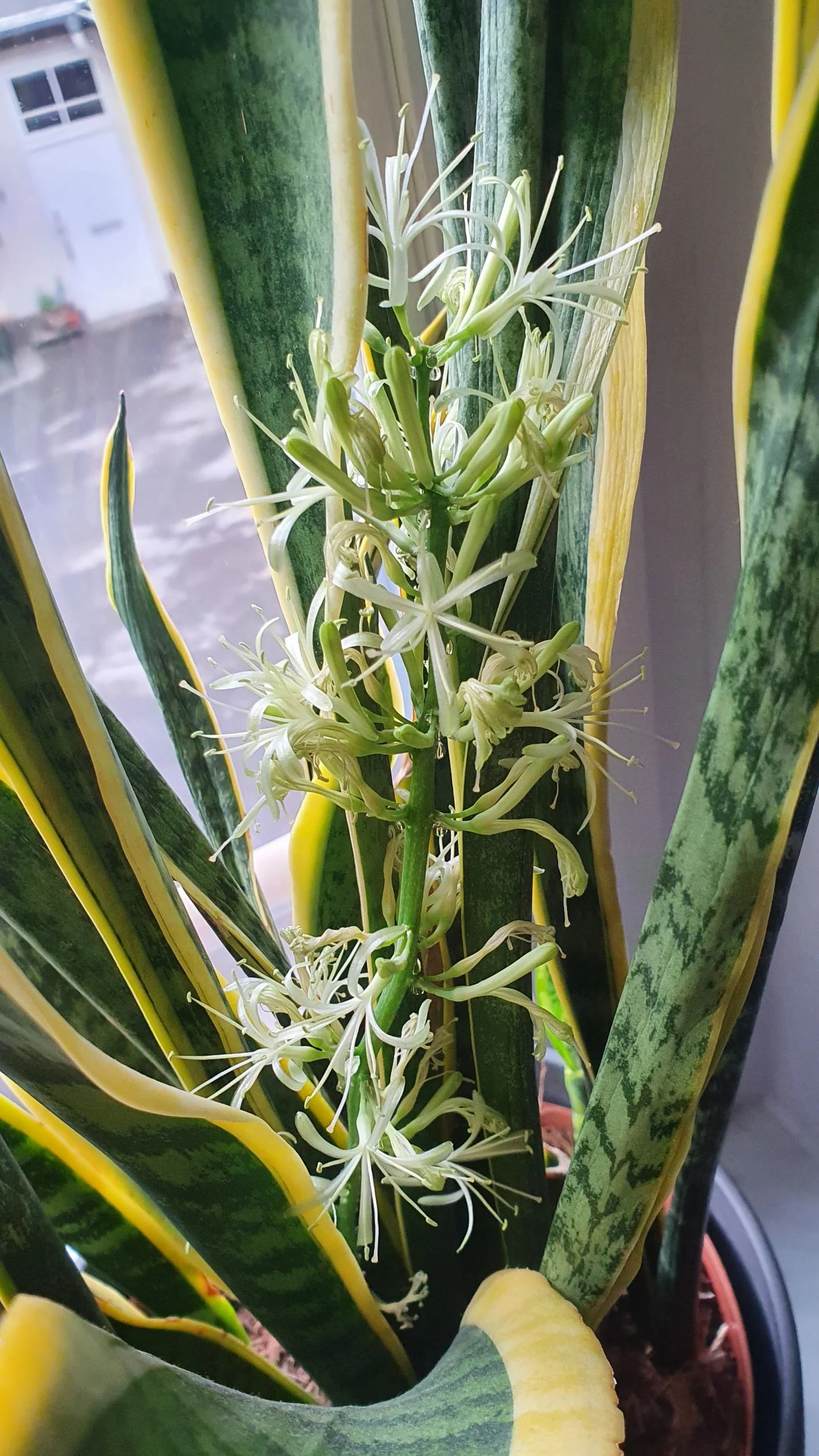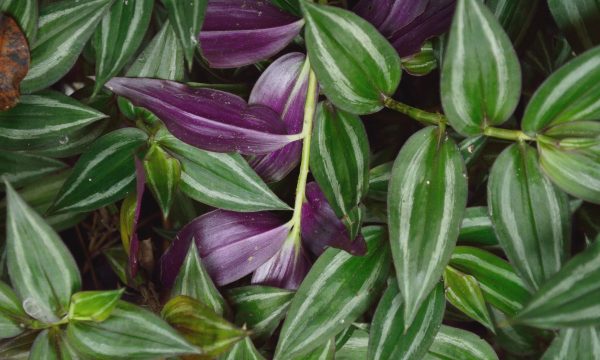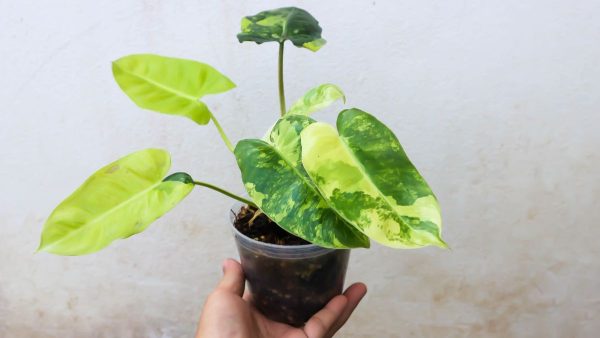Snake plants are popular for their resilience, air-purifying abilities, and striking foliage. Due to their tropical nature, people love them to have and grow.
However, witnessing their bloom is a rare treat for many.

The flowers, which are creamy white and give off a sweet fragrance, typically appear unexpectedly.
While the blooming of snake plants is not guaranteed, however, if you meet certain conditions and do care, it can benefit it amazingly.
In this article, we will explore all these practices to get your Snake Plant to Bloom.
1. Give Proper Lighting
Lighting is extremely important for every plant out there.
You can’t expect a plant to grow well in a dark or poor lighting environment.
Like many other plants, Snake plants rely on light for photosynthesis, like eating meals for humans.
Snake plants can tolerate low light conditions, but they still need some exposure to indirect sunlight to initiate this process effectively. You need to make sure.
If you can’t provide direct sunlight, you should try Indirect sunlight for a balance of light intensity.
Place your snake plant near a window that can receive bright, indirect sunlight for a few hours to stimulate flowering and avoid sunburn or leaf damage.
Proper lighting means a certain duration of light exposure. Snake plants require around 5 hours of indirect sunlight daily for healthy growth.
But these 5 hours should give them a quality light.
If your apartment does not receive such conditions, don’t worry.
Because snake plants can tolerate artificial light, such as LED lights, natural sunlight should be preferred to help them grow.
2. Provide Nutrients
The proper nutrients encourage a snake plant to bloom and support healthy growth.
Due to the snake plant’s low-maintenance nature, heavy and harsh chemicals are unnecessary. Instead, you can use an inexpensive and balanced fertilizer. (I’ll recommend this one)
During spring and summer, you can fertilize your snake plant with houseplants formulated with nitrogen, phosphorus, and potassium to encourage flowering.
When fertilizing your snake plant, dilute the fertilizer by half to avoid over-fertilization, nutrient imbalances, and potential harm.
Don’t go aggressive because snake plants are sensitive to over-fertilization, and excessive fertilizer can cause salt buildup and root damage and inhibit blooming.
Put focus on both fertilizing frequency and quantity. Fertilize your snake plant every 4-6 weeks during the growing season and reduce it during the winter.
Meanwhile, periodically test the pH of your soil with testing kits and maintain a pH range of 5.5 to 7.5 because snake plants prefer slightly acidic to neutral soil.
If you decide to use chemical fertilizers, make sure to add some organic matter to the soil for better essential nutrients, soil quality, and growth.
3. Repotting and Root Bound
Unless you are a beginner in plant growth, you must know the importance of repotting plants, mainly indoor and tropical plants.
You should be caring for a snake plant if it becomes root-bound. When a snake plant outgrows its current pot, its roots become jam-packed and cause stress.
Repotting allows you to refresh the soil and provide more space for root expansion.
But, it should be done properly, otherwise it can kill your plant.
First, you must look for signs of root-boundness, such as growth out of the drainage hole, circling the pot’s edges, or the plant’s instability.
Normally, it happens at a specific time and if you find it, it will help a lot. The best time is in early summer when it’s actively growing. And yes, avoid doing it in winter.
While repotting, choose a slightly larger new pot for more room to grow. There should be proper drainage holes to prevent waterlogging and prevent root rot.
Now, you have your pot and your growing plant. Remove it from the current pot carefully, and try not to damage the roots, as they will be jam-packed.
Meanwhile, you inspect the roots for any rot or damage. Trick away dead roots with scissors or pruning shears if you find any.
Fill the bottom of the new pot with fresh soil and firmly place the plant in the center with additional soil. Don’t apply too much force or pressure at any moment.
Once repotting is done, water the plant and immediately check its drain.
4. Water Carefully
Overwatering is a common issue with snake plants, causing root rot. Instead, it’s important to water your snake plants with care for better and longer-lasting health.
It will encourage blooming and your snake plants will effectively thrive.
Before watering, check the soil’s moisture level with your finger, which is about an inch into the soil. If it feels dry, it’s time to water. But if it is wet, wait a few days.
Water the soil directly at the base of the plant rather than overhead or on leaves, as this can increase fungal diseases and rot and waste plenty of water.
Allow the soil to dry out between waterings to prevent waterlogging instead of flooding your plant or causing more moisture and mud.
Use room temperature water, not warm, hot, or cold.
Otherwise, it will damage the plant. Your watering frequency may need to be adjusted based on temperature, humidity, and season.
While watering, you should monitor drainage via its holes to allow excess water to escape.
5. Ensure Proper Humidity
Proper humidity is important for snake plants because it also contributes to blooming.
Snake plants can tolerate low humidity, but moderate and proper humidity is more favorable for their growth.
First, you should monitor humidity levels with a hygrometer where your snake plant is located. They should be between 40% and 60%.
If humidity levels are below or above this range, you can try grouping plants to create a microclimate with slightly higher humidity levels.
Place your snake plant near other houseplants or place a tray filled with water and pebbles nearby to increase humidity through evaporation.
A humidifier can also increase humidity in dry winters. However, to ensure a better flow of moisture, you need to position the humidifier near your snake plant.
If your snake plant’s pot is on a tray filled with pebbles and water, it can help with humidity.
6. Well-Draining Soil
A well-draining potting mix is ideal for snake plants’ health and blooming potential. Well-draining soil allows excess water to flow away from the roots.
You need to choose the right soil, such as a formulation for succulents or cacti.
It typically contains a combination of perlite, sand, or gravel for improved drainage.
You should avoid heavy and dense soil that retains moisture for extended periods at all costs.
This soil can suffocate the roots, leading to root rot in snake plants.
A soil mix that feels light and airy when you squeeze it in your hand is ideal and best.
After selecting the right soil, choose the right pot with proper drainage holes to allow excess water to escape and prevent water from pooling at the bottom.
If your snake plant is currently potted in dense soil or a container without drainage holes, repotting it into a well-draining potting mix and a container with drainage holes should be your homework to promote healthier root growth.
7. Proper Temperature
Temperature plays a significant role in snake plants’ health and blooming potential. The ideal temperature range for snake plants is 70 to 90°F in a day.
Snake plants can tolerate temperature fluctuations, but it’s your job to provide optimal conditions for healthy growth and encourage blooming.
Snake plants thrive in ambient temperatures ranging from 60°F to 75°F, ideal for growing conditions.
However, avoid exposing your snake plant to extreme temperature fluctuations to prevent stress and inhibit blooming.
When indoor heating may dry out the air and lower temperatures in the winter, you can use a humidifier to get a stable temperature.
But yes, you must provide proper ventilation to your indoor snake plants. The air circulation around your snake plant should be proper to prevent stagnant air.

